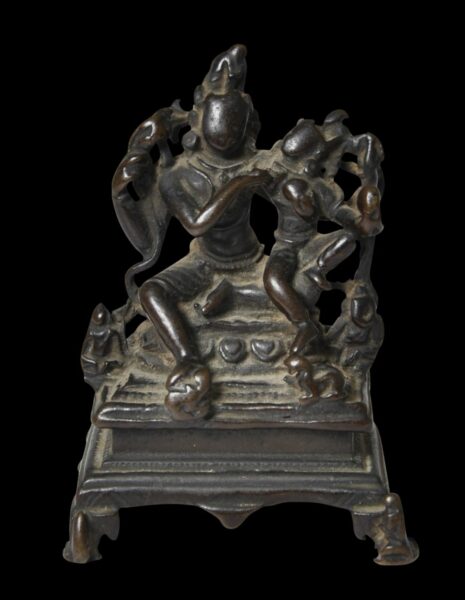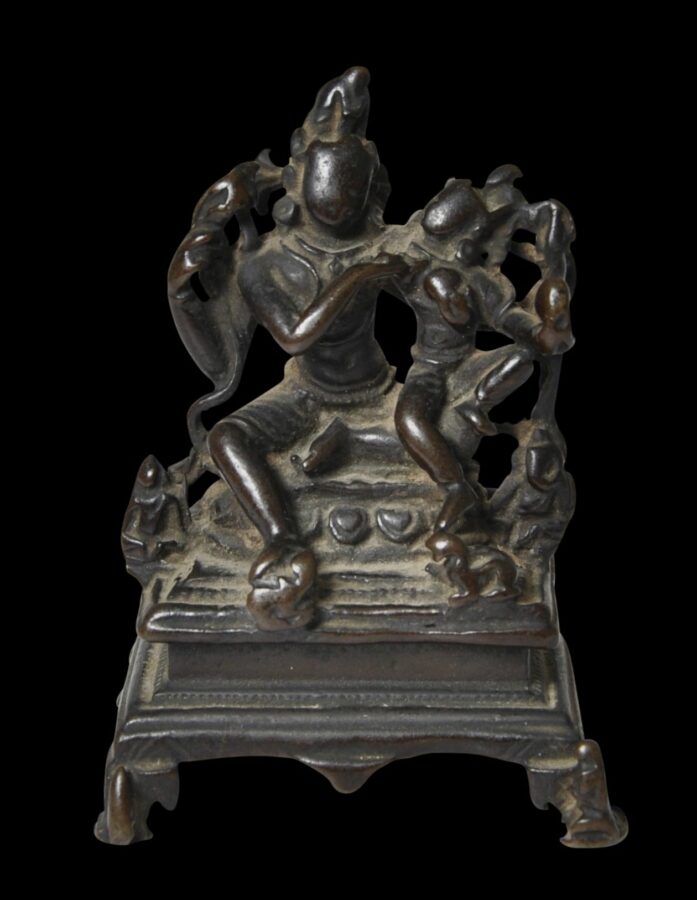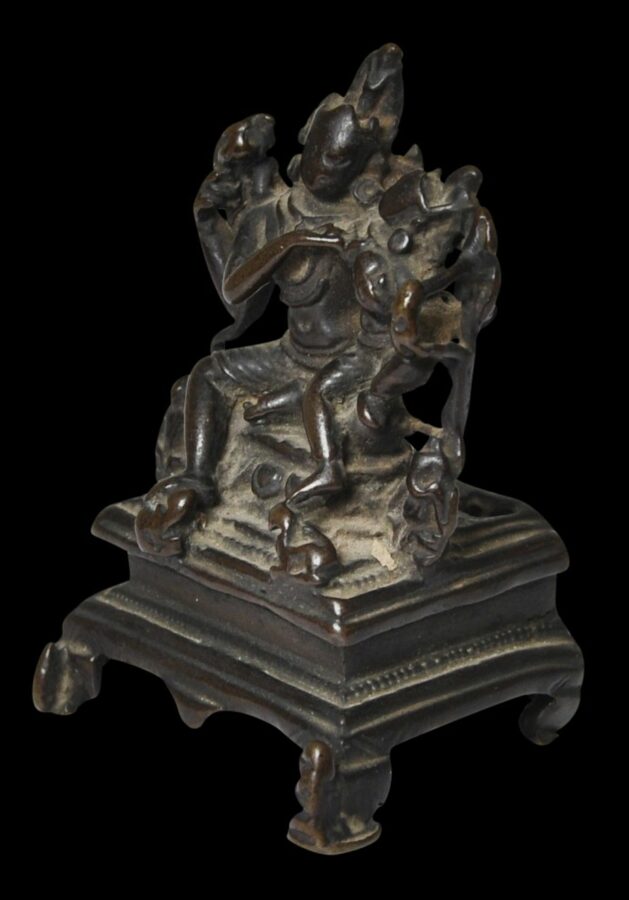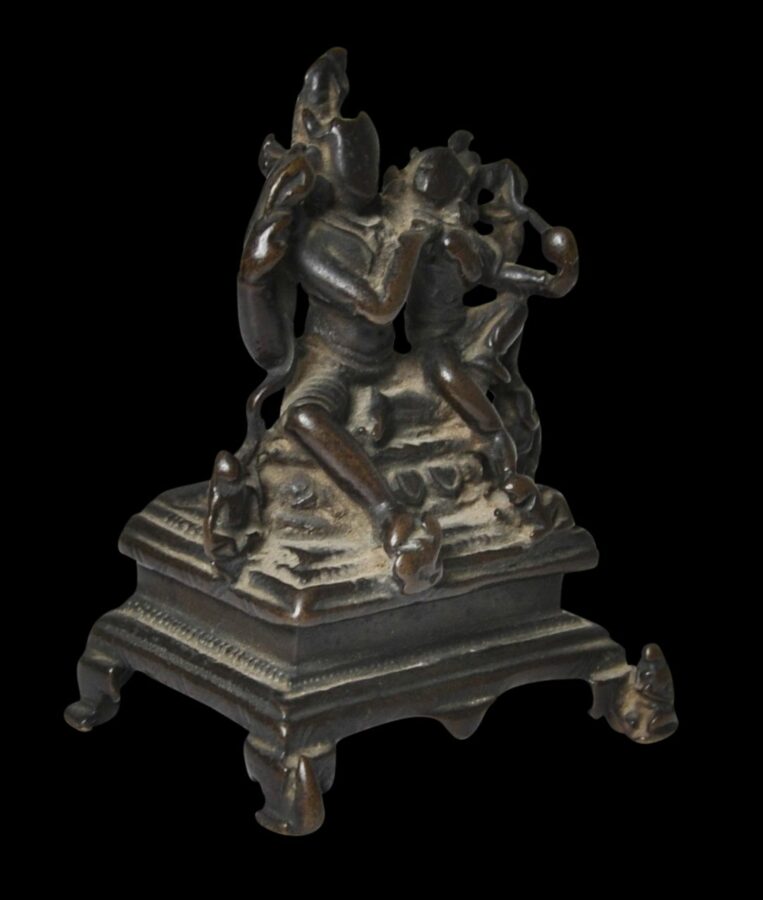Enquiry about object: 8424
Pala Bronze Group of Shiva & his Family
Bihar, Northern India Pala period, 10th century
height: 8.2cm, width: 6.2cm, depth: 4.8cm, weight: 163g
Provenance
Originally from Howth Castle in Ireland, the ancestral home of the St Lawrence family and the Earls of Howth.
This superb, early diminutive bronze dates to the 10th century and to the Pala dynasty. It shows Shiva’s family seated on a stepped platform raised on four legs.
Shiva is the main figure and he holds his consort Parvati to him. On the right, is a tiny image of their son Ganesh, the elephant-headed deity. On the left is Skanda (also known as Kartikeya, Kumara, and Murugan) their other son.
Shiva’s right foot is supported by his vahana or celestial vehicle, the bull deity Nandi. Parvati’s right foot rests on her vahana, a lion. The presence of both the bull and the lion in a peaceful setting underscores the sanctified, divine nature of the space represented here.
Shiva has multiple arms. One supports Parvati from behind. Another fondles her breast. Such an expression of conjugal intimacy is characteristic of Pala-era bronzes (Pal, 1988, p. 175).
An adorant is at the front right leg of the platform.
A version is illustrated in Pal (2001, p. 64).
The bronze has much wear and a lustrous patina that is almost black. It is an evocative bronze of its period.
References
Pal, P., Indian Sculpture, Volume 2 – 700-1800, Los Angeles County Museum of Art, 1988.
Pal, P., Desire and Devotion: Art from India, Nepal, and Tibet in the John and Berthe Ford Collection, Philip Wilson Publishers, 2001.






